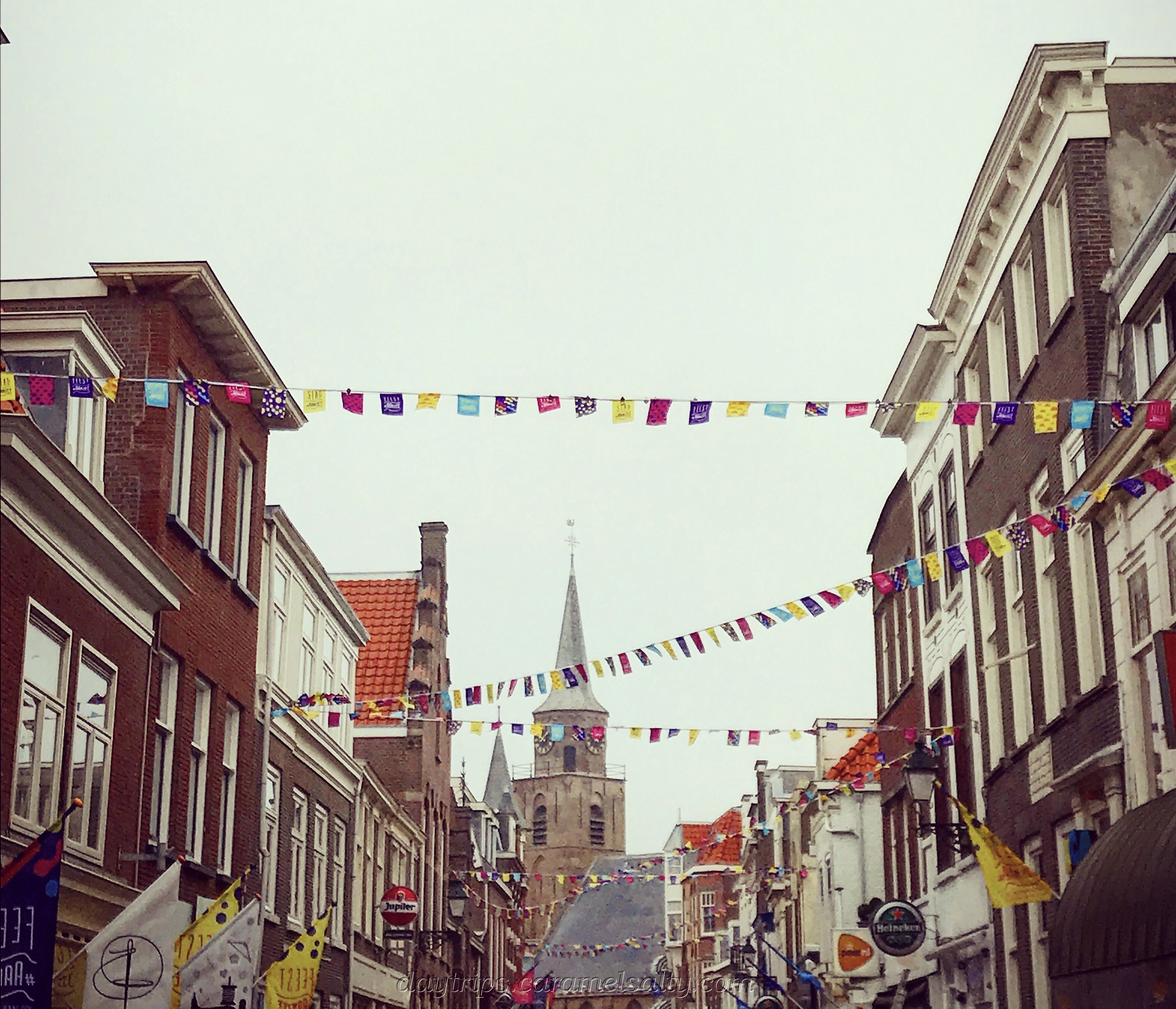
The Hague – Arriving by Train at the Seaside Town of Scheveningen
Little do I know as I board the Antwerp – Den Haag intercity train, that by sunset, thanks to an artist’s legacy, the 20th century transition of a fishing village into a city beach resort will be vividly visualised. Meanwhile back on the train, I appear to have seamlessly transitioned from Belgium into Holland. There’s no welcome sign to the Netherlands. There’s no change in the flat farming scenery.
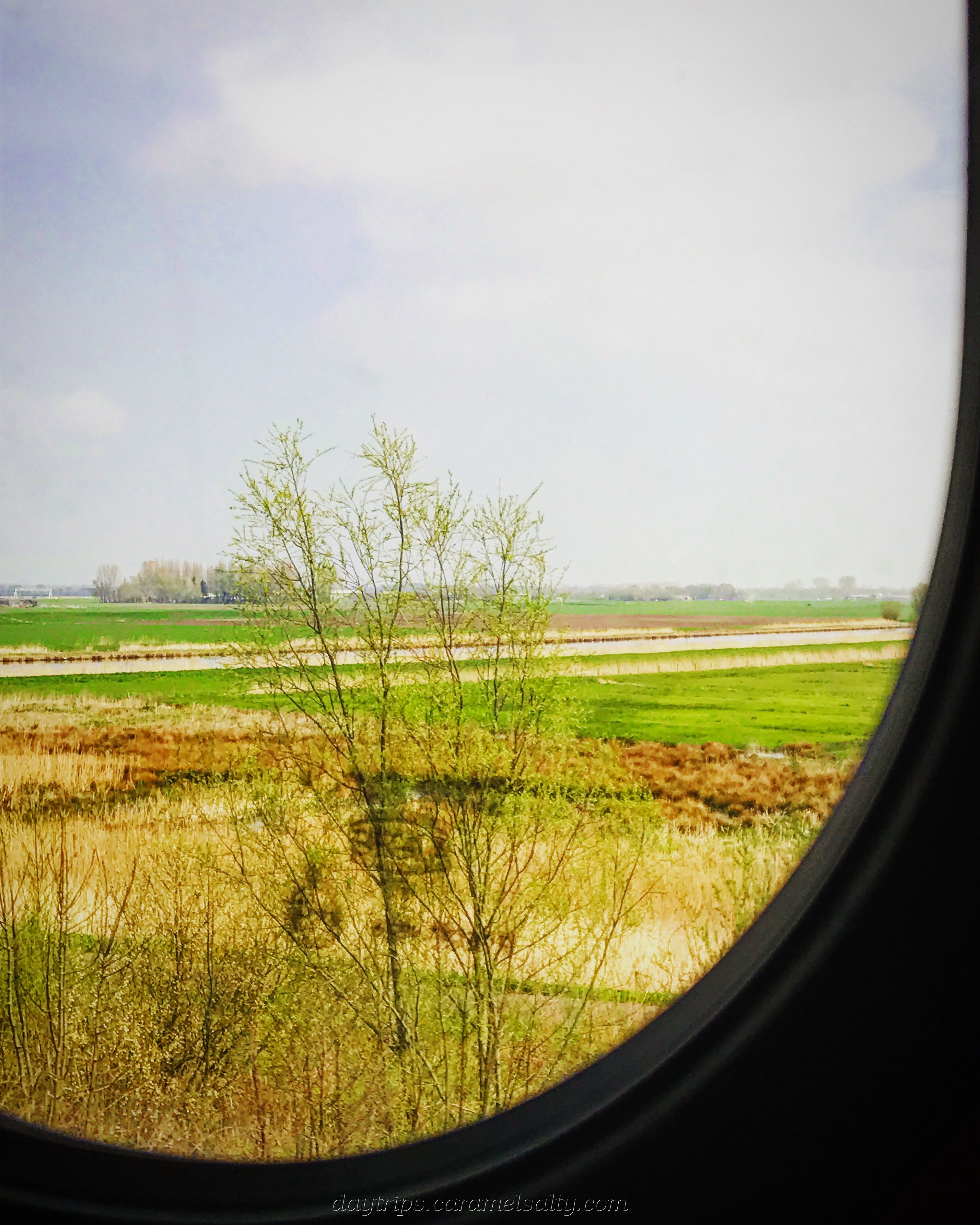
But I note a proliferation of waterways, of canals on farms, of streams leading into rivers, of canals alongside the railtrack. And this is because, once past Roosendale, I’m in the delta through which the mighty Rhine flows into the North Sea. In fact, the train crosses over the duck egg blue Holland Diep, one of the many distributaries of the Rhine on this delta.
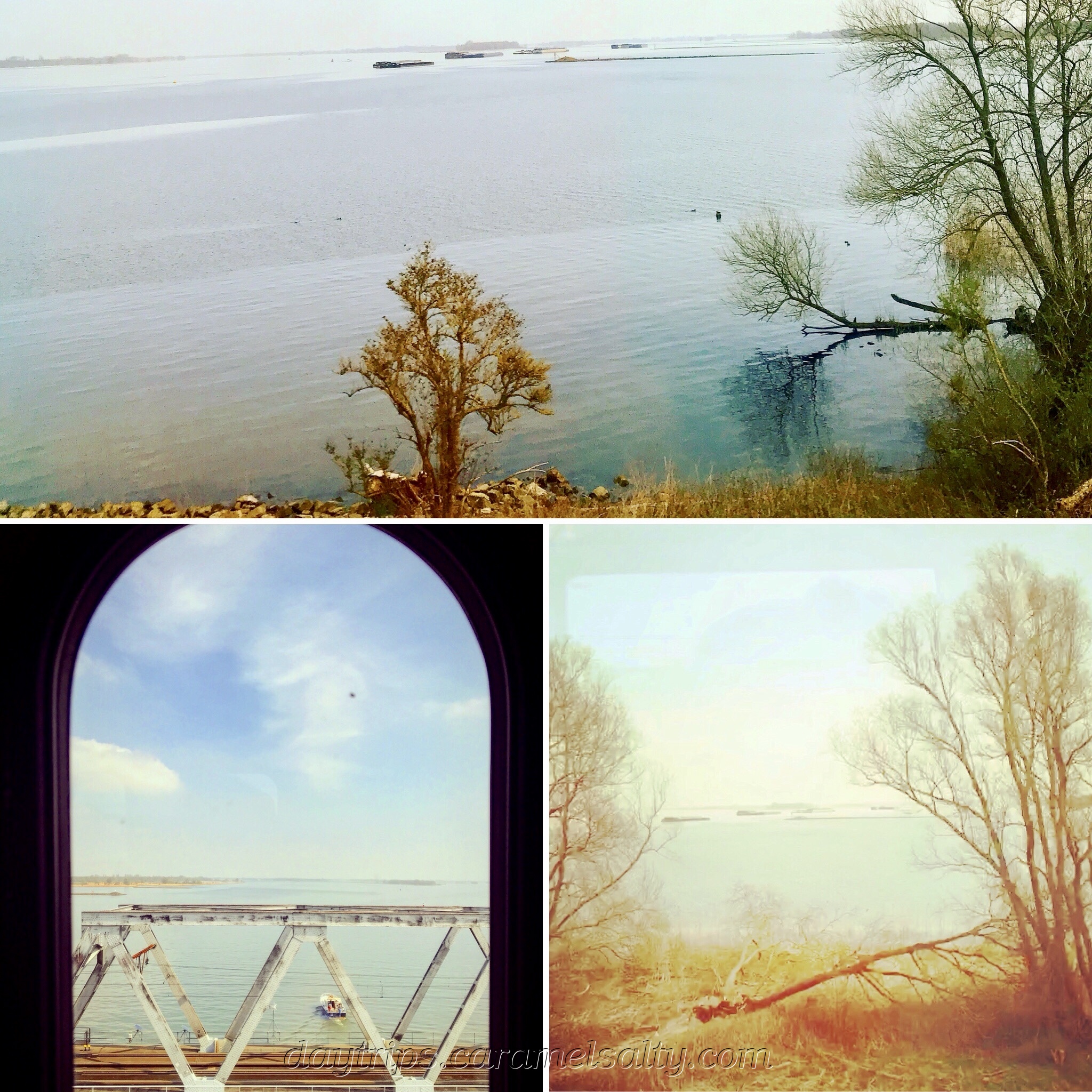
- Start of Walk: Zwarte Pad, Den Haag
- Cost of Day Out: Moderate (£)
- History Content – Low
It’s cold. But I make hay whilst the sun shines in usually rainy Holland, and head to the beach. I’m greeted by the very 60s blue and white Carlton Palace Hotel, brown brick housing, rectangle white blocks of flats and a car park by some straggly dunes. Not exactly an inspiring start. So I’m grateful to the residents of [1] 153 Amaarsestraat for bringing some colour and charm to the neighbourhood.
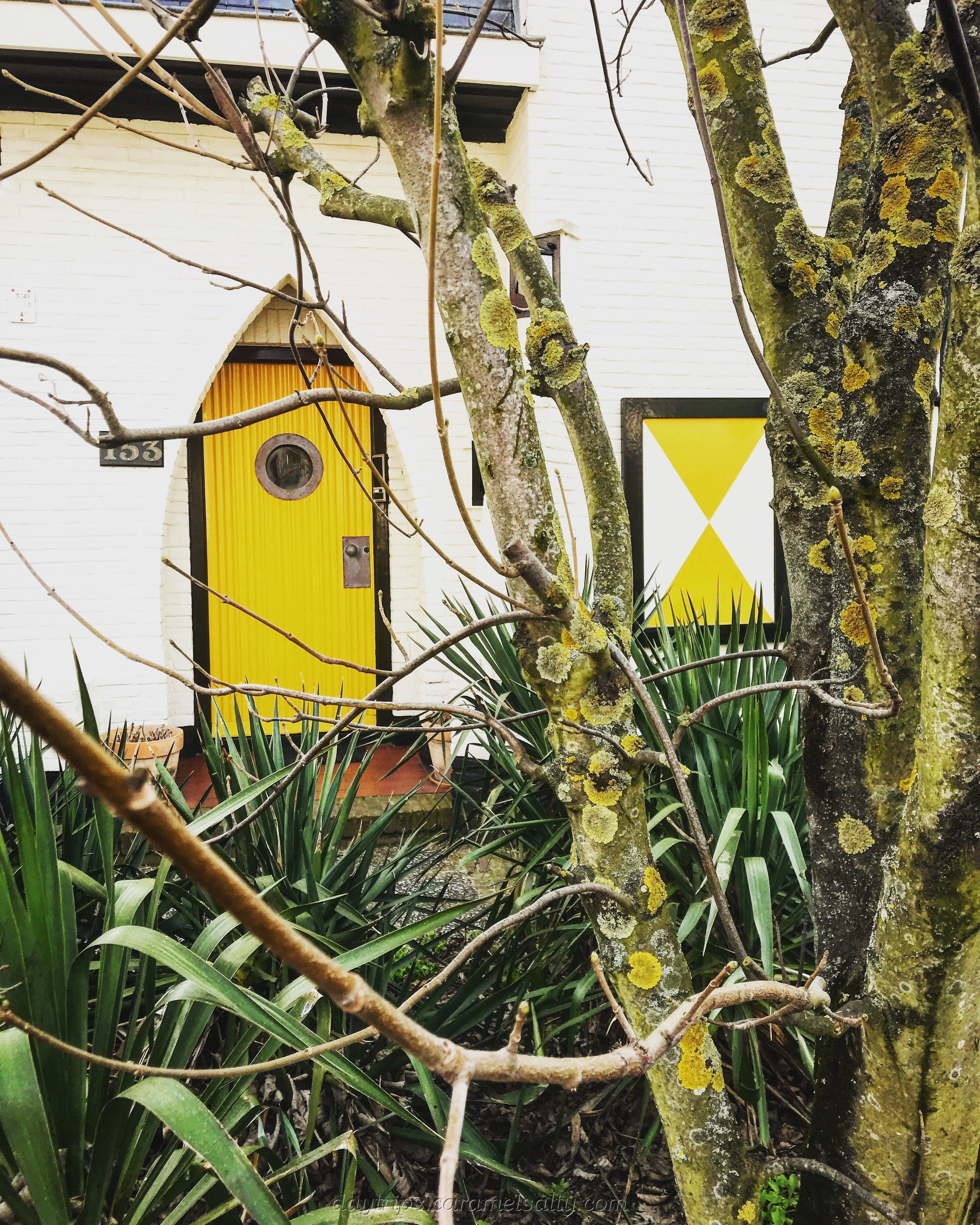
Eager to discover the source of the gleeful shrieks within earshot, I follow the crowds towards the beach to find [2] the pier. It’s a typical pier, stretching long and thin out to the sea, a round pavilion at the end, lined with shops and kiosks to tempt the punters. Except this one also has excited kids zip wiring over it.

I wander down on to the [3] soft, creamy, sandy beach. It’s a gorgeous Sunday. The beach is busy. Shoeless children run around. Ball games are in progress. Hyperactive dogs enjoy the open space.
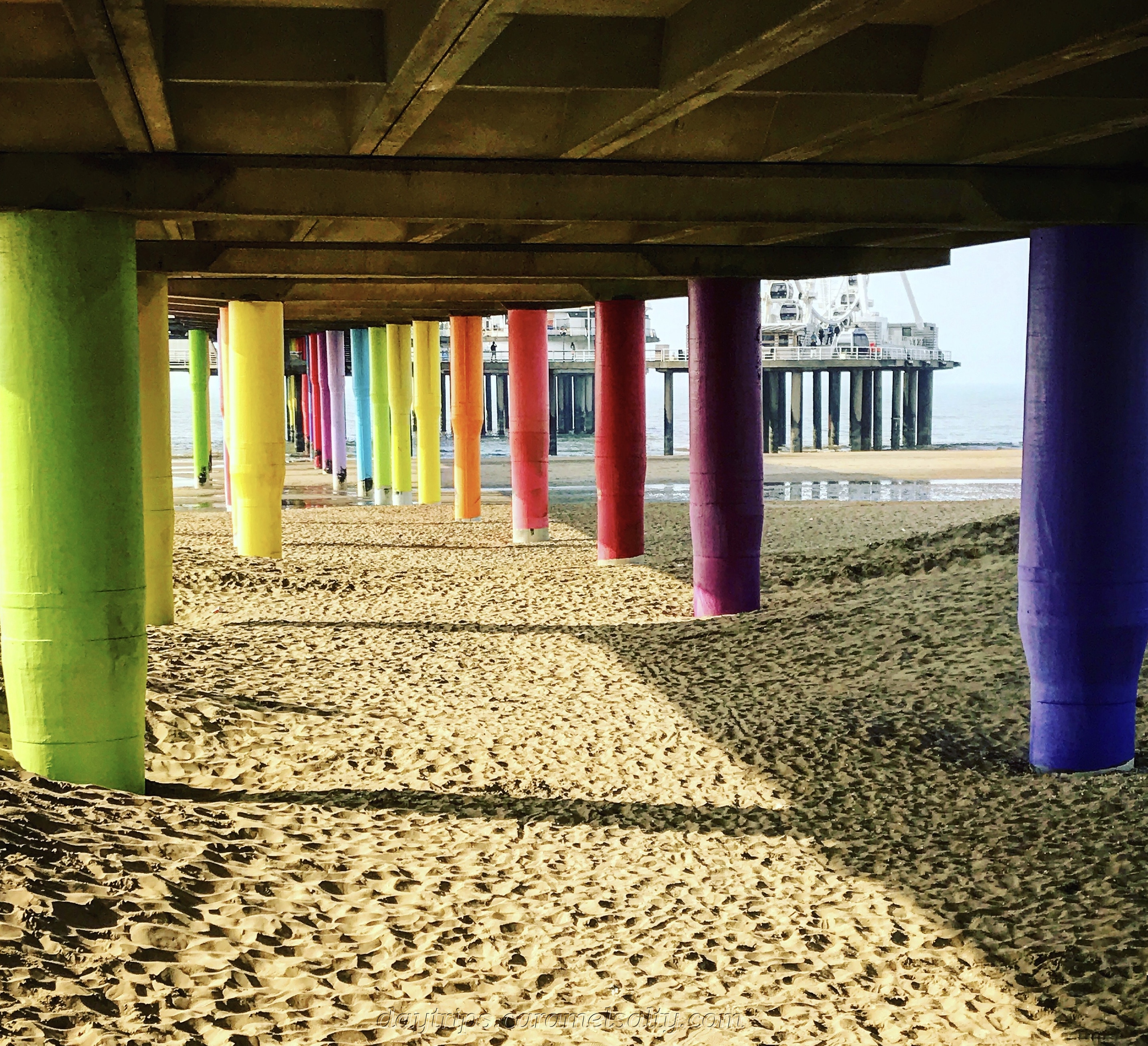
Scheveningen’s history as a bathing resort starts with a wooden waiting room with four bathrooms in 1818. Its reputation as a health spa culminates with the building of the 5-star [4] Grand Hotel Amrath Kurhaus in 1885. Originally a concert hall and hotel, which helps explain its cavernous lobby, the Rolling Stones are the last band to perform here in 1964.
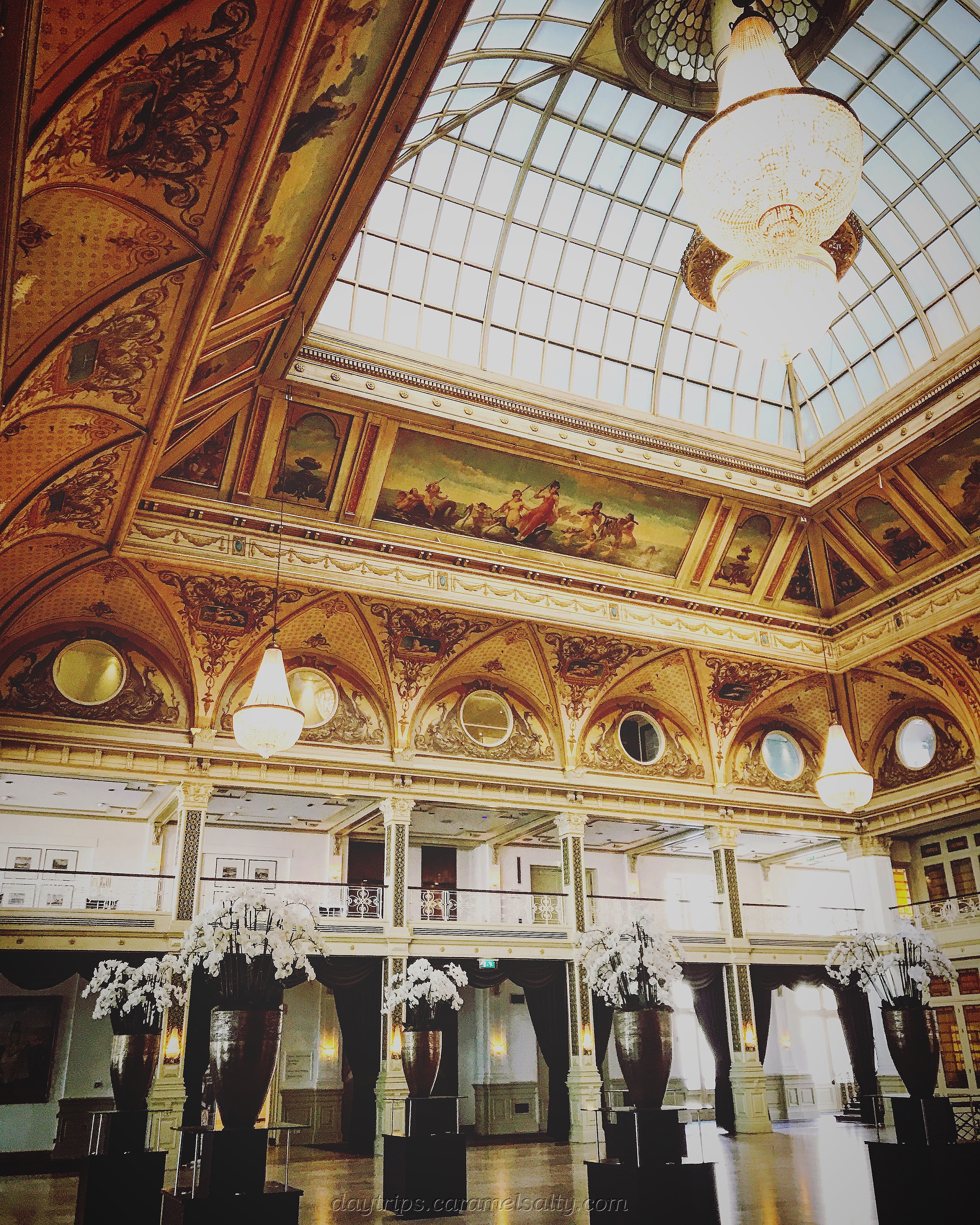
Walking past [5] SEA Life Scheveningen, I can’t miss the larger than life Herring Eater, one of the many [6] quirky, playful sculptures by the American Tom Otterness, adorning the promenade. And just behind is [7] the Pavillion de Witte, a former country residence built by William I in 1827.
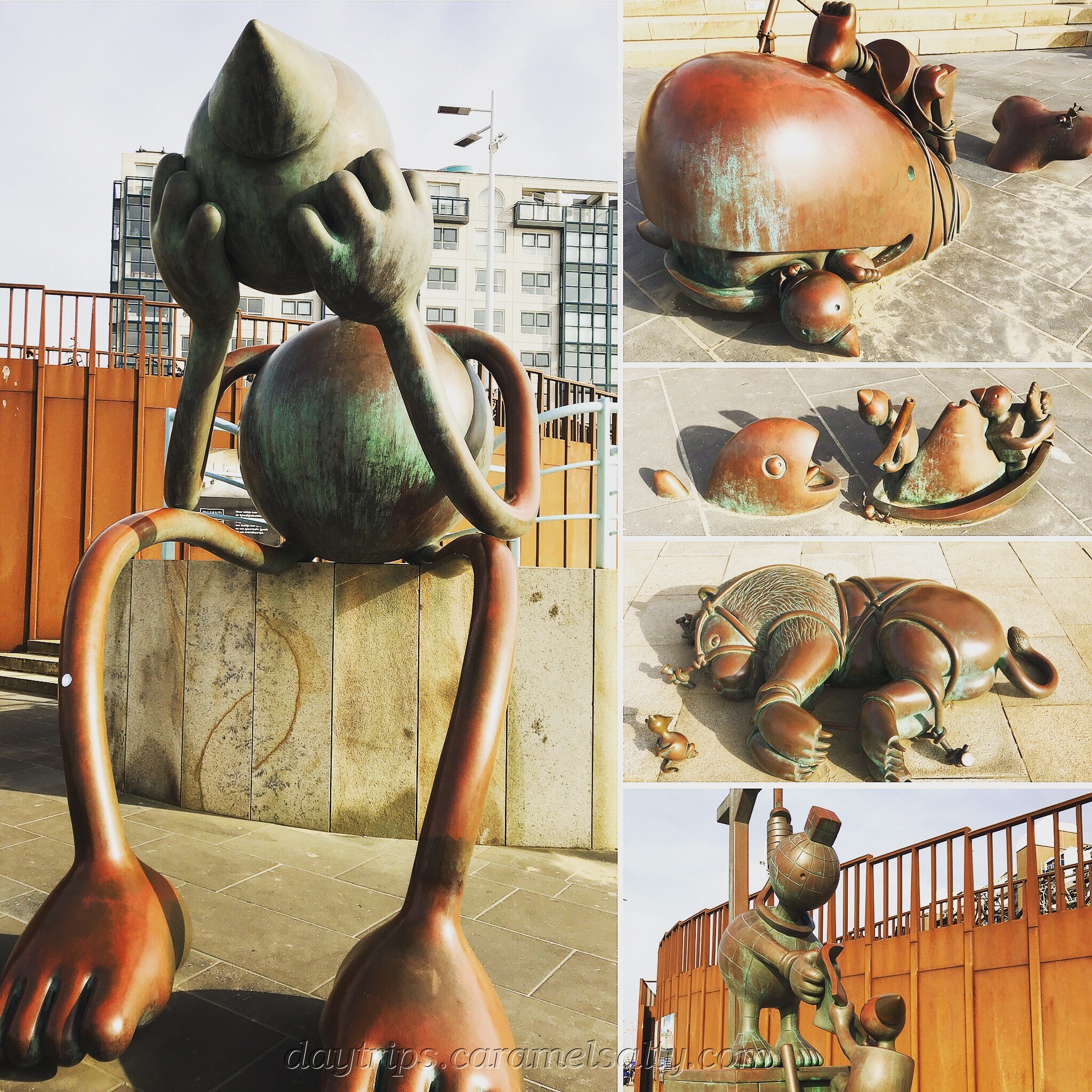
[7] Museum Beelden aan Zee, set up to encourage contemporary art, is bigger in the inside than the outside. It goes underground, then into glass houses, to the outside and on to terraces with views of the pier in the distance. In addition to the sculptures, I enjoy the tiny plaster cast room as white statues silently stare down at me.
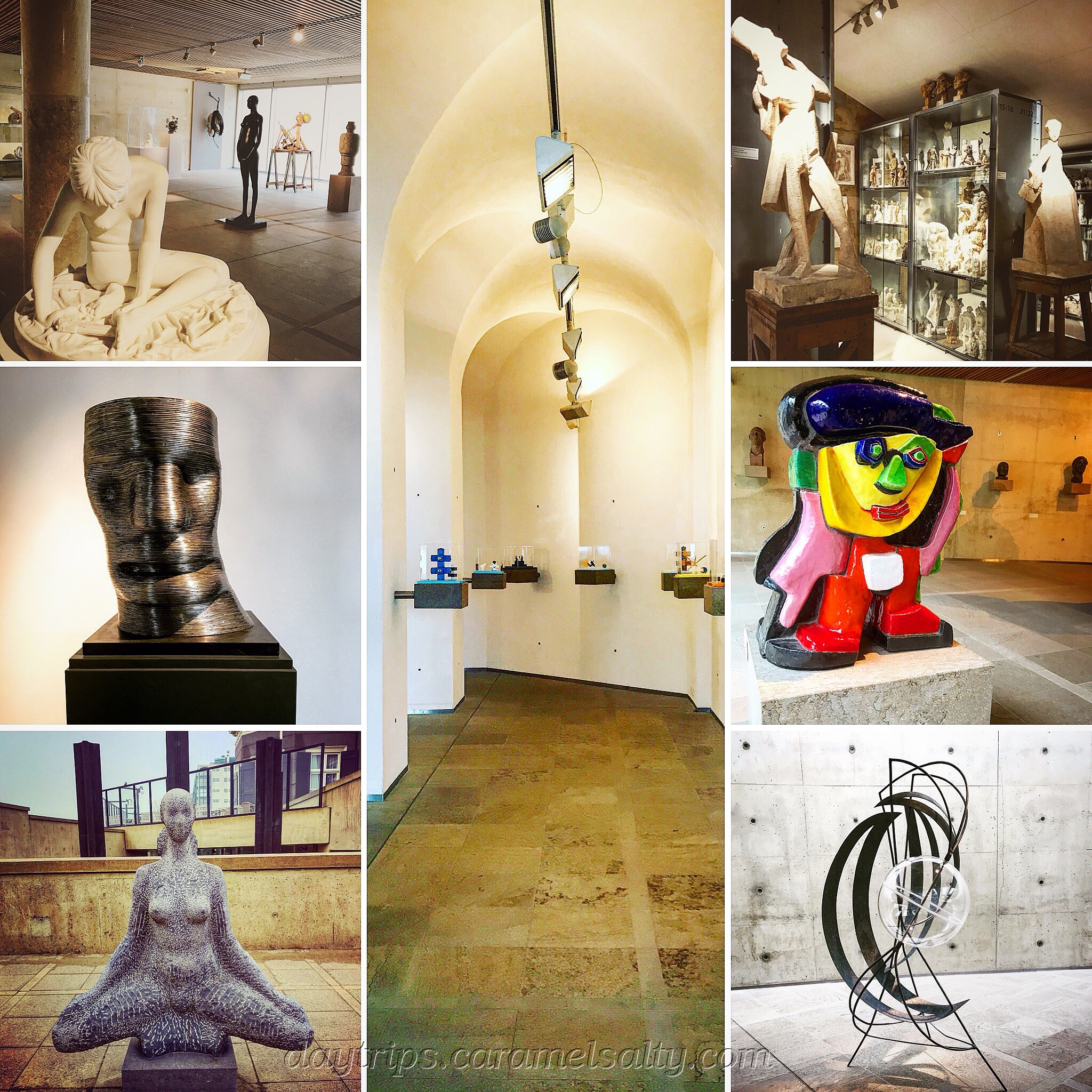
So popular is the beach on a sunny day, that the tarmac road leading towards [8] Scheveningen Boulevard is nose to tail with traffic. As the road is built over the sand dunes of Scheveningen, it’s elevated from the beach. Pale sky blue steel bridges lead me down from the dunes to the wide pedestrianized boulevard below.
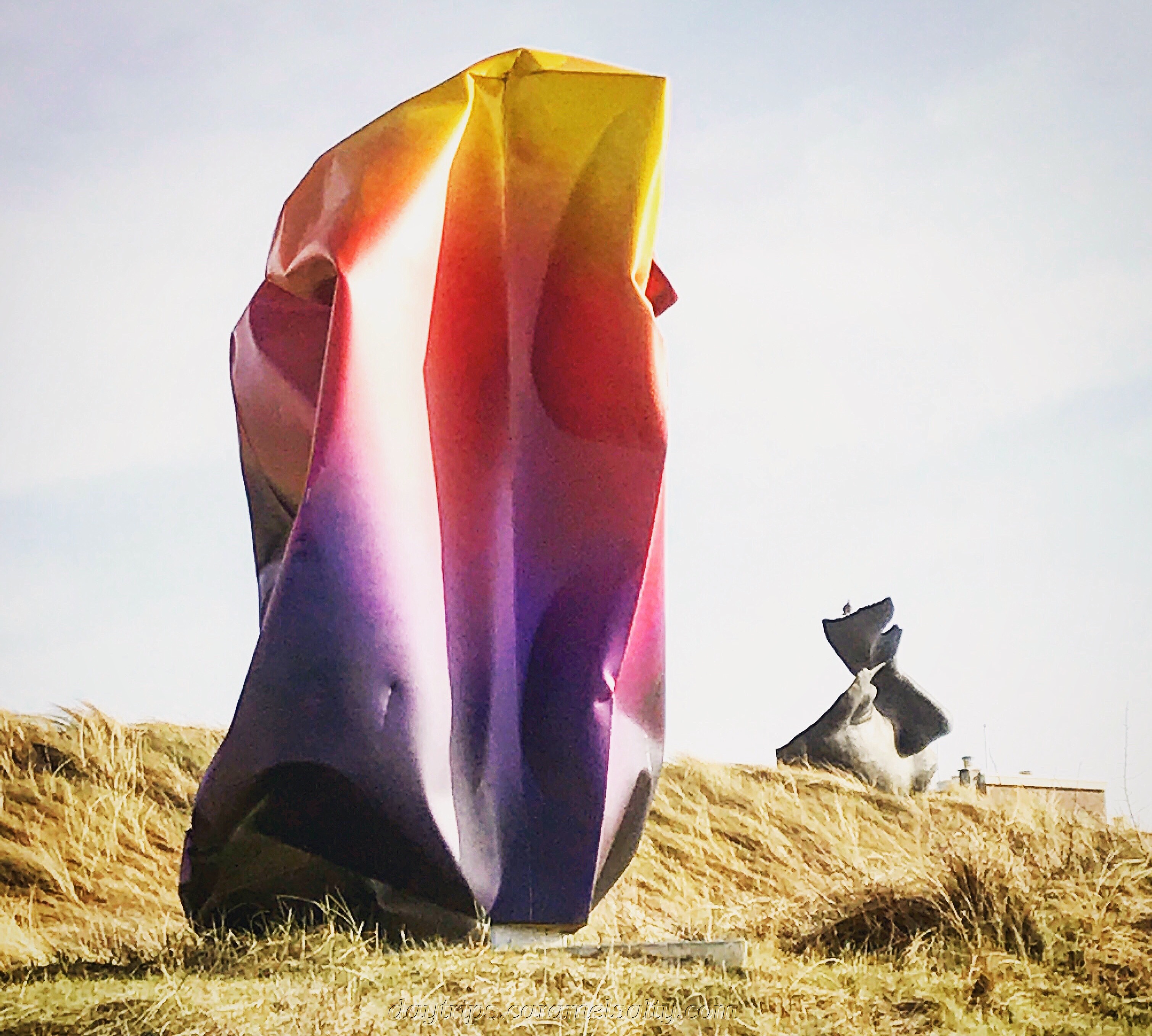
All along the beach front are many [9] lively, pop up restaurants serving up various cuisine. With great beach views, many have outside heating and blankets for that cold chilly sea breeze. Long-standing fish restaurants such as [10] de Waterreus, are also established here.

I come across the temporary sand artwork installation called [11] Rings Beside the Sea, which celebrates the 200th anniversary of this bathing resort. The installation is being allowed to erode by wind, water and man. And so I do my bit by strolling across one of the rings, to the edge of the sea.

The towering [12] Scheveningen lighthouse (1875) must have seen many storms in its lifetime, including the one in 1894 which destroys many of the flat bottomed fishing boats (bomschuiten) of Scheveningen. These flat boats on the beach used to complete the image of a traditional fishing village, as illustrated in this painting.

The destructive 1894 storm persuades the villagers to build a harbour. This starts the demise of the 150 or so bomschuitens left, as they’re gradually replaced by motorised boats. Mesdag, a late 19th century painter of seascapes, laments the loss of old Scheveningen, a lament which soon becomes reality, although due to other factors.

From the lighthouse, it’s a 15 minute walk to the working [13] harbour of Scheveningen at Eerste Haven. Which is sufficient time to discover more local history. In 1653, the Battle of Scheveningen, the last battle of the First Anglo-Dutch War (detailed account here), takes place not far from where I am. The equally pitted 120 strong opposing fleets sail through each other 4 times in ferocious fighting. The Dutch Commander in Chief of the Navy, Maarten Tromp, is killed out at sea here. I will visit his grave in the coming days.
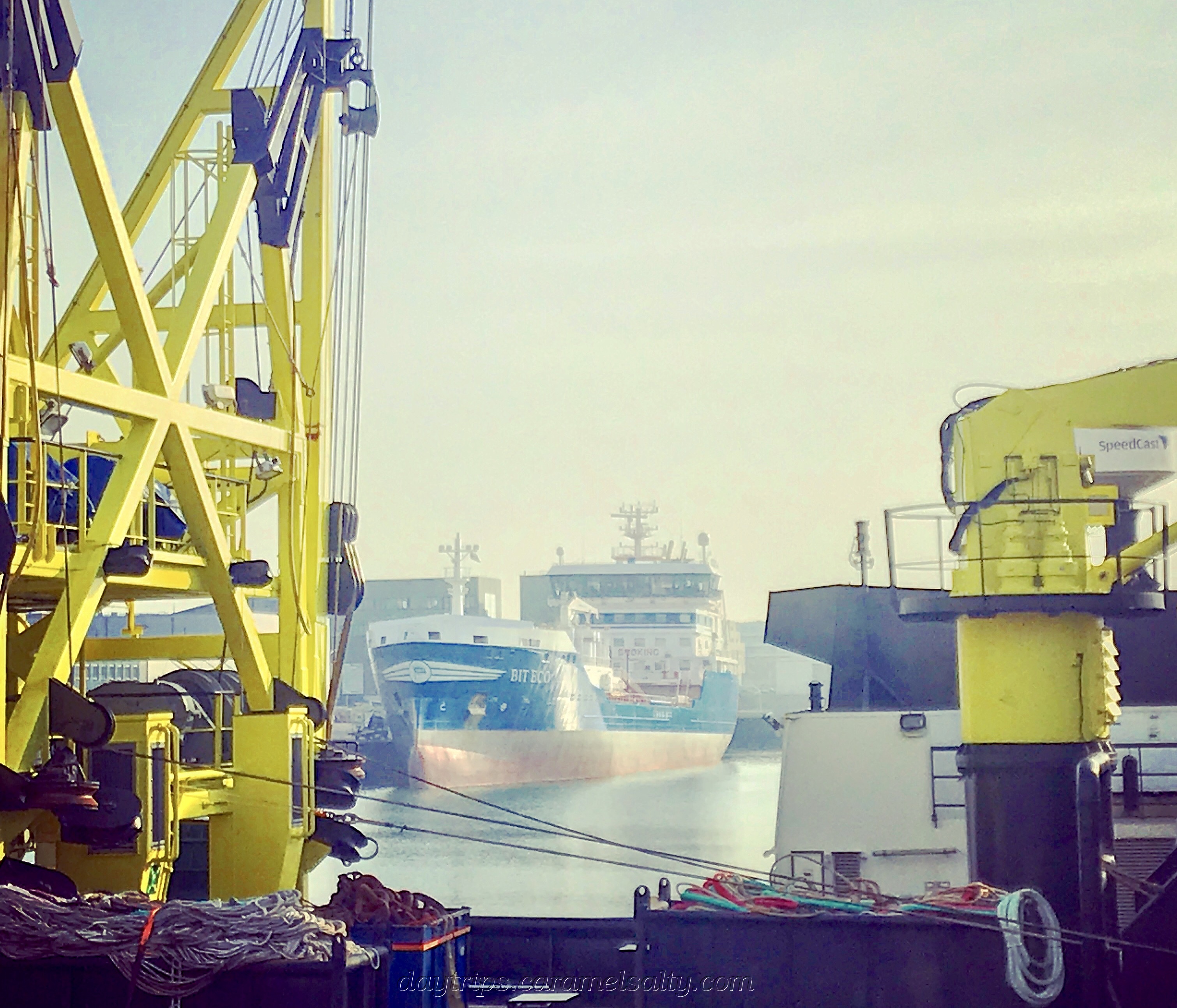
The next harbour on is [14] Tweede Haven which is more of a marina. The distinct smell of fried fish in the air announces the presence of restaurants. But as I don’t find the same upbeat atmosphere as the beach front, I make my way to the village instead.
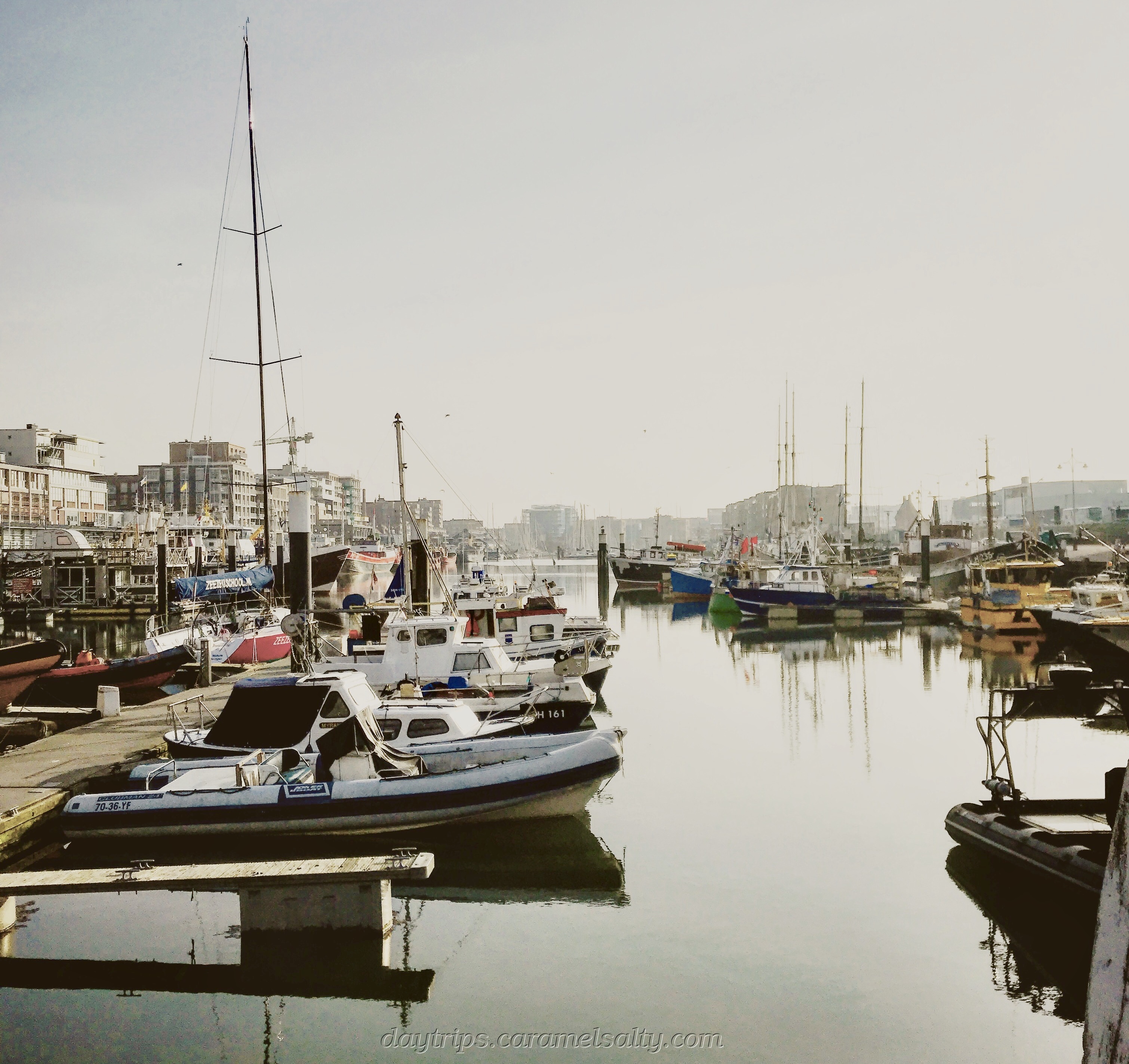
I walk through the gaily decorated main street of [15] Scheveningen village to the [16] Oude Kerk. In 1570, a savage storm washes away half the village, leaving the church at the edge of the village since then. It’s a lively main street with hostels, little restaurants, bars and gift shops, amongst other things. No beach views, but a good place to grab something a bit more reasonably priced.
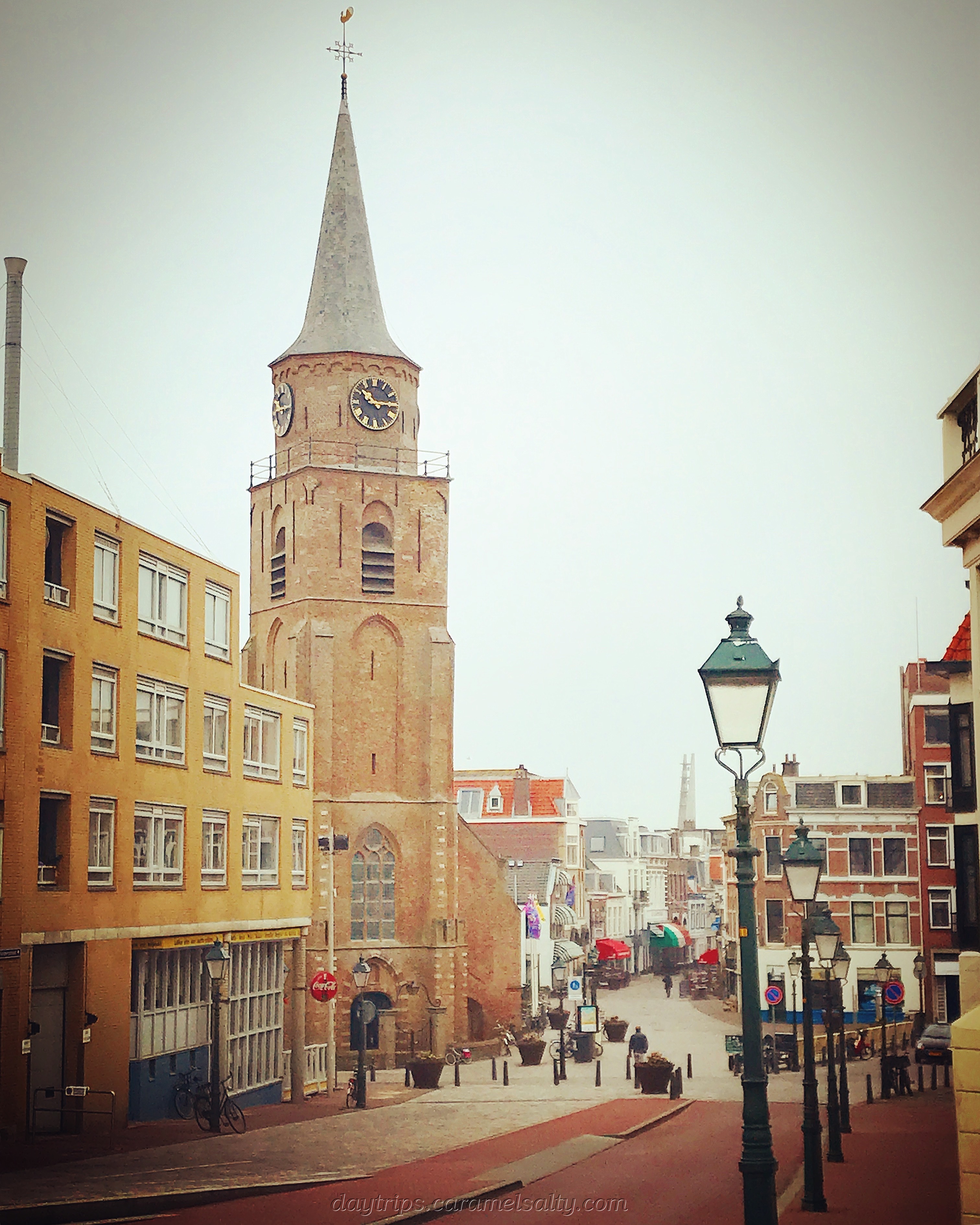
I make my way back to the top of the street for the [17] No 1 tram. This is the most picturesque tram journey in Den Haag as it cuts through [17] Scheveningen Forest, which is the subject of another one of my walks in Den Haag. I get off at the [18] Panorama Mesdag, which houses some of Mesdag’s wonderful Dutch seascape paintings and his panoramic landscape of Scheveningen.
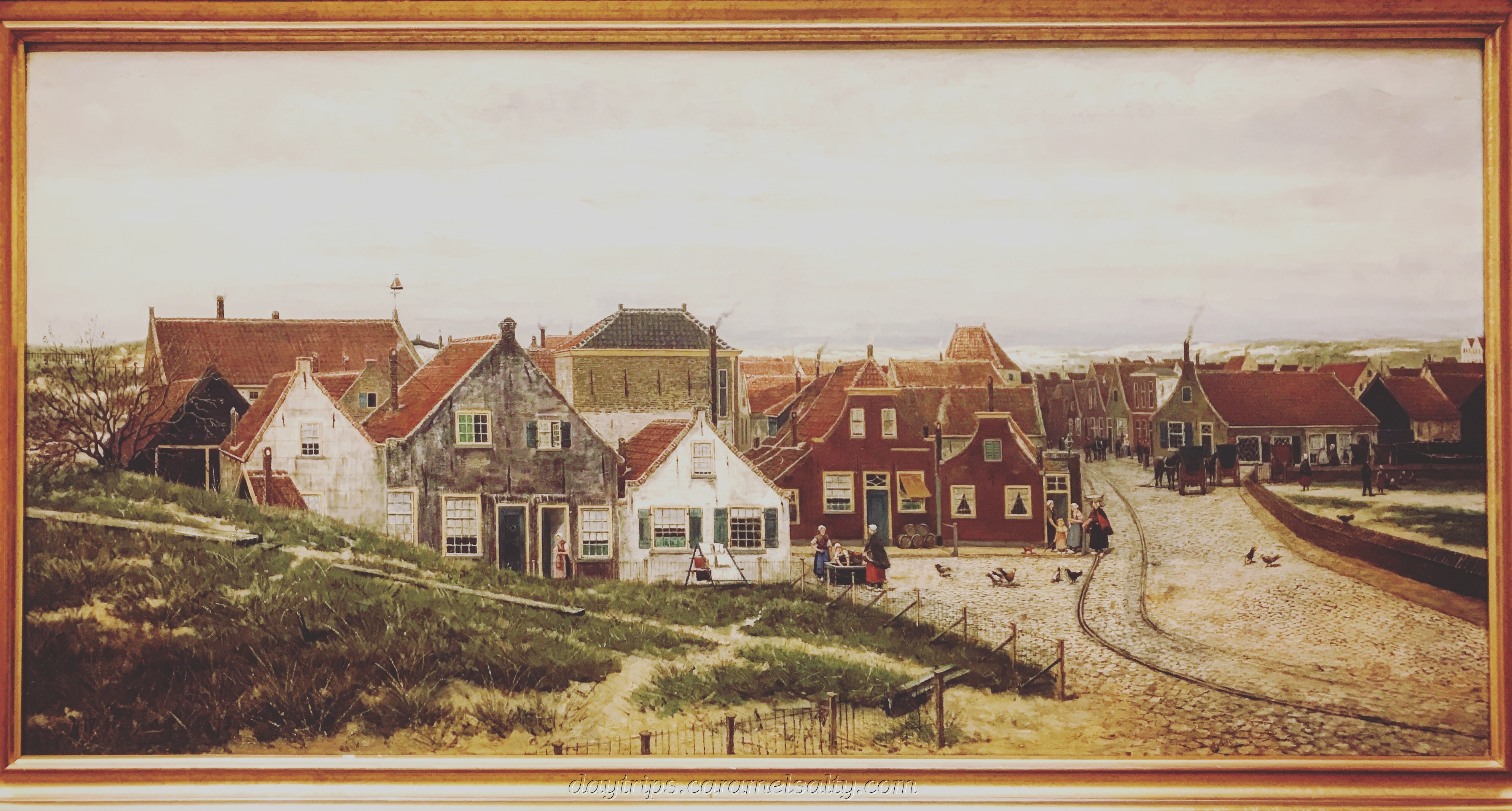
Mesdag’s 360 degree painting of Scheveningen in the 1880s is nothing short of spectacular. I’m with Mesdag on this and lament the dramatic change of Scheveningen since Mesdag’s time. But it’s not Mesdag’s regret of a harbour that causes this. The most dramatic change is brought about long after his death, with the advent of the car.
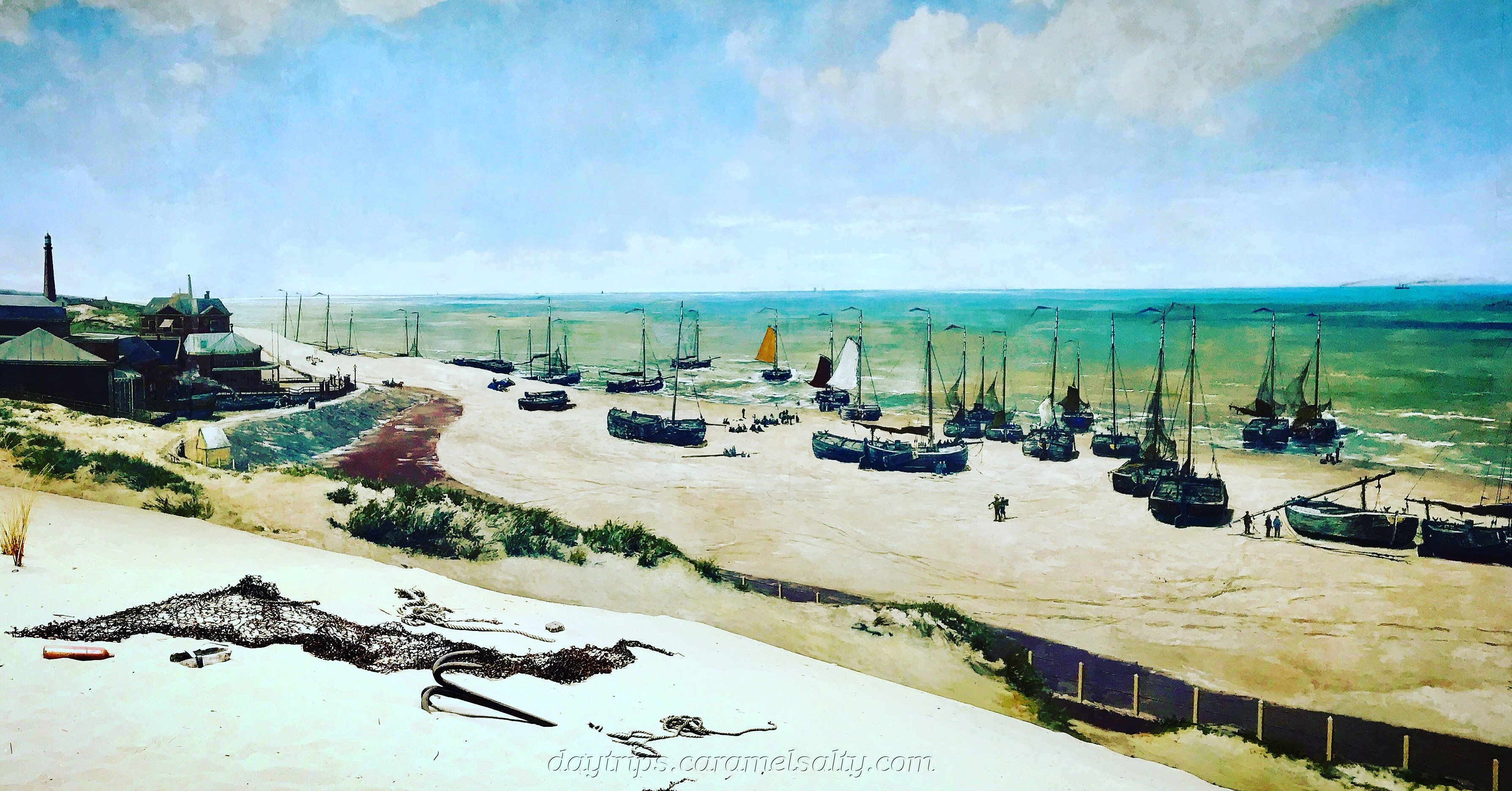
So from a 14th century fishing village, connected to Den Haag only by a sandy dune road through Scheveningen forest until 1665, Scheveningen is now a busy, easily accessible, beach hop from the city. Yet it still exudes a charm with its soft sandy wide beaches, isolated walks and its zest for enjoyment. And, of course, the brisk sea air.
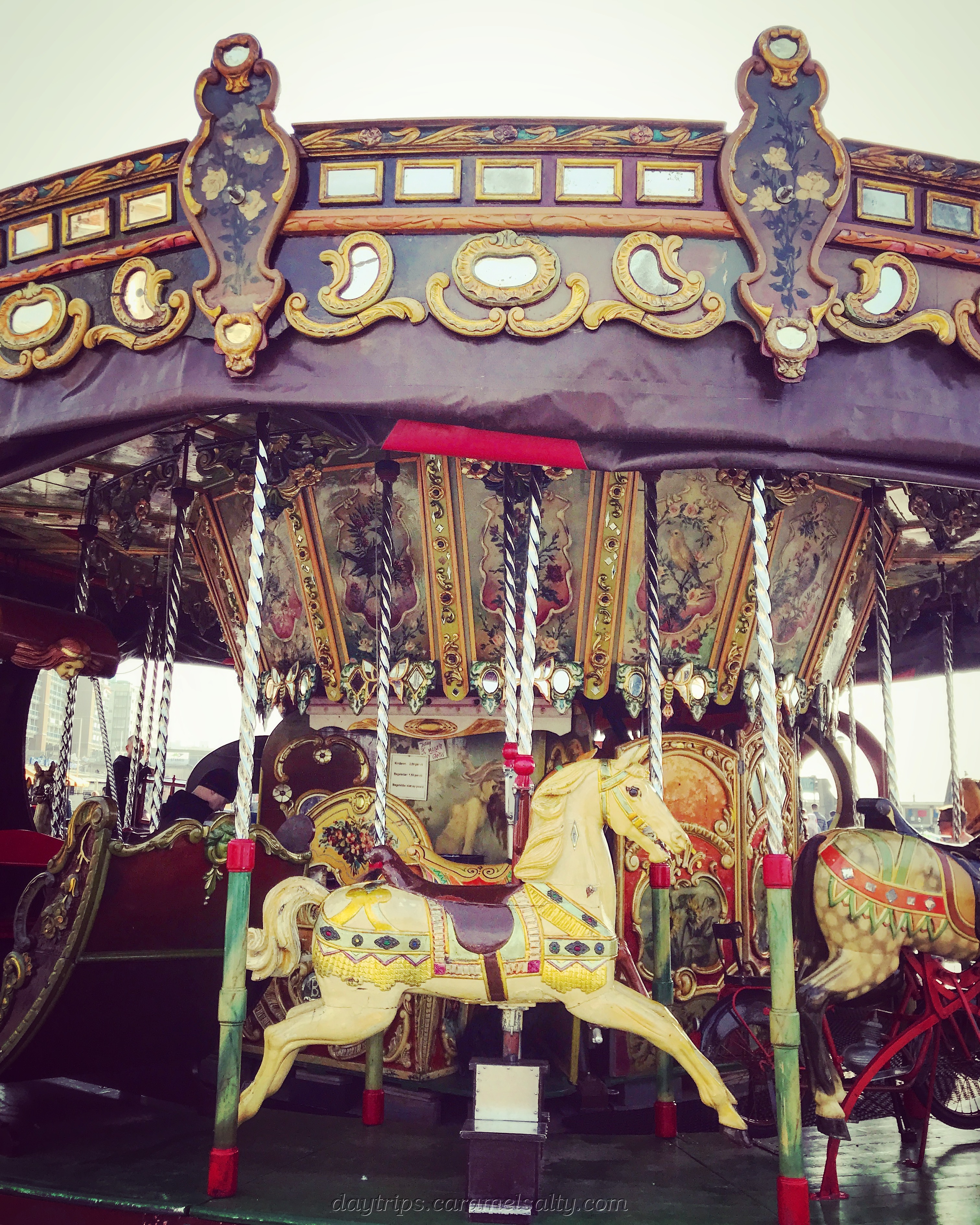
Some Helpful Hints
- Intercity Train tickets – can be purchased from any mainline train station in Holland and Belgium. Travel on any train on the date of travel is permitted, other than Thalys.
- Trams #1 and #9 go from Den Haag Spoor Station to Scheveningen pier. Day tickets can be purchased on board from ticketing machines.
- I walk the Scheveningen walking trail until point 15 before turning back.
- Beelden and Aan museum (website) – closed Monday, free with the Holland Museum Card
- Scheveningen Lighthouse (website) – open Wed and Sat afternoon. I don’t visit it this time.
- Panorama Mesdag (website) – open daily, free with the Holland Museum Card